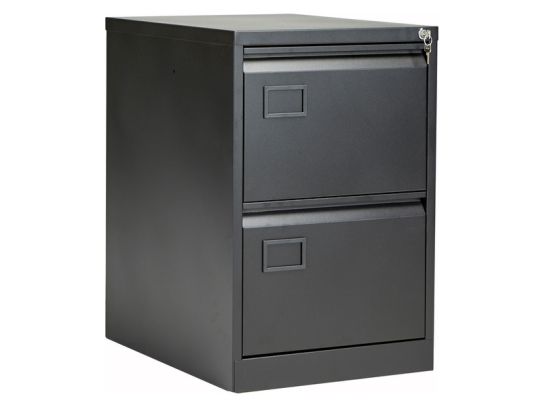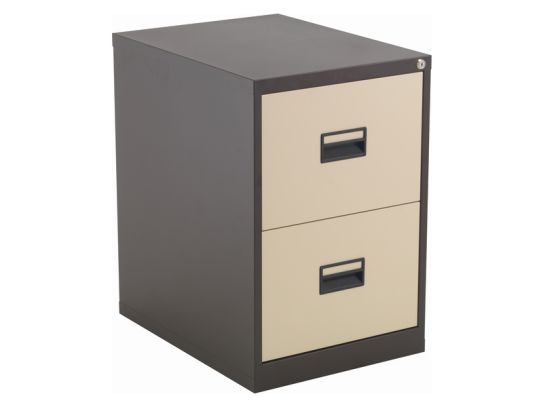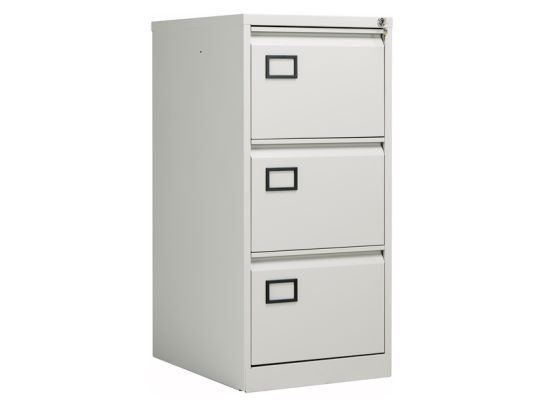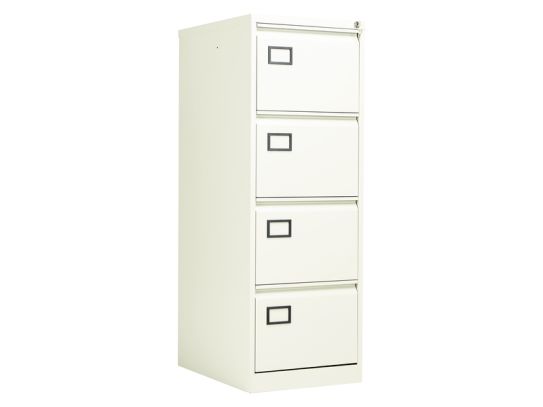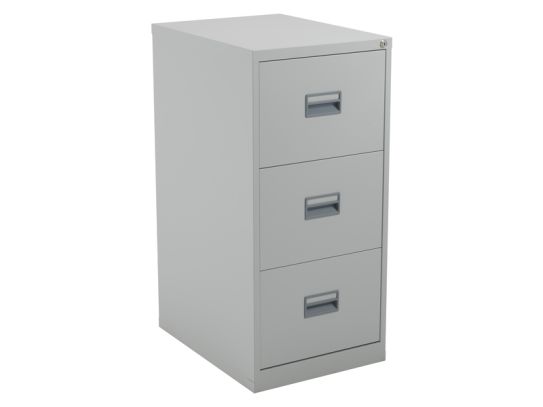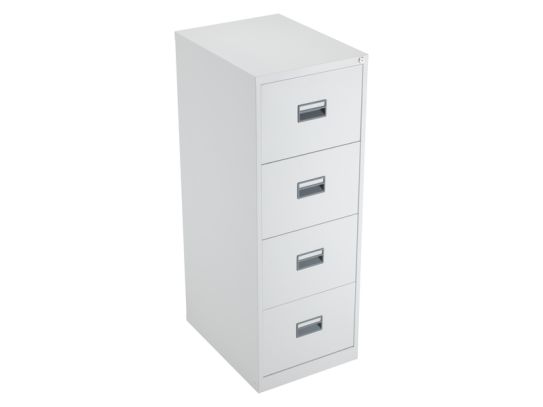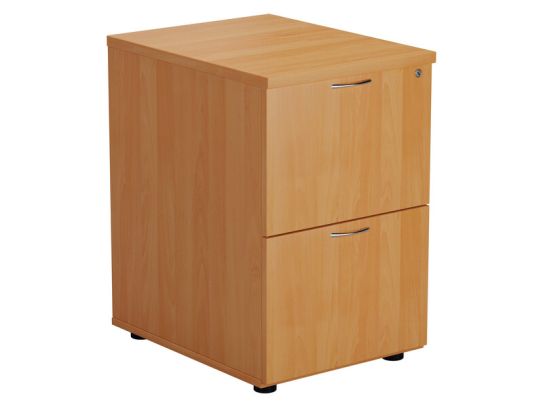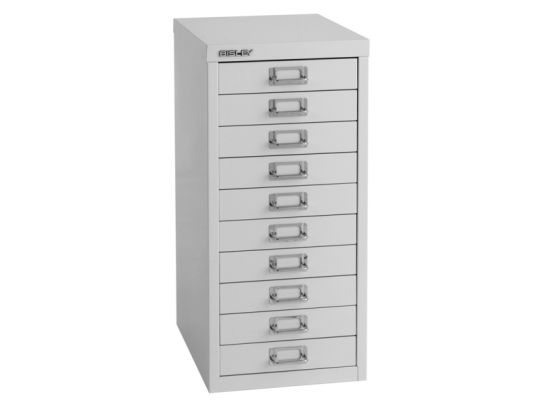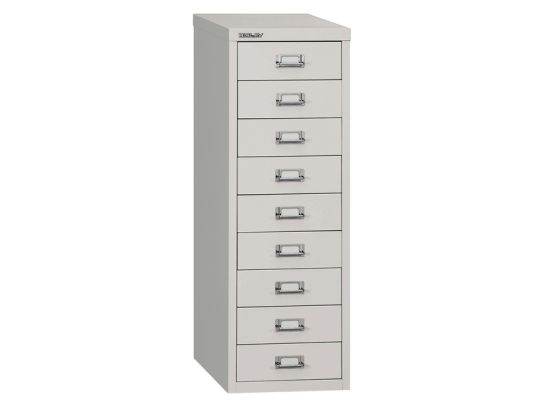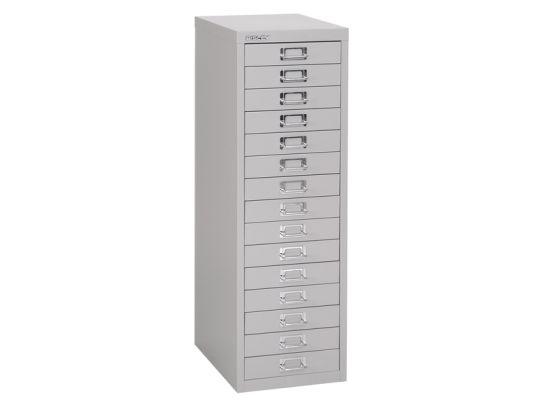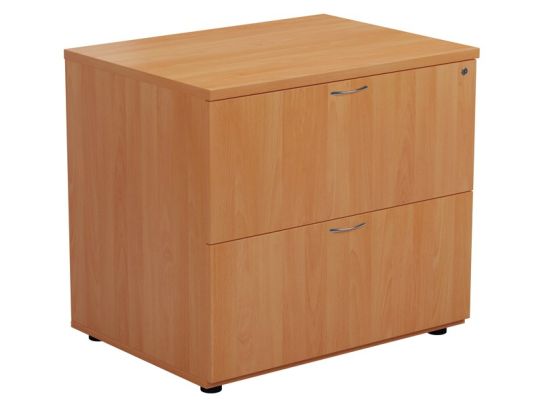Filing Cabinets
Stay on Top of Your Paperwork with Our Stylish and Functional Filing Cabinets
Are you tired of clutter and disorganisation in your office? Introducing our sleek and stylish filing cabinets, the perfect solution for keeping your documents and papers in order. With a range of colours and finishes to choose from, you can find the perfect fit for your office decor. These cabinets are built to last, with sturdy construction and reliable locking mechanisms to keep your important documents safe. Their compact design allows them to fit seamlessly into any workspace. Say goodbye to messy desks and hello to increased productivity with our filing cabinets. Order yours today!
What Are Filing Cabinets?
Filing cabinets are pieces of furniture designed for storing and organising important documents and papers. They typically consist of a set of drawers, with each drawer divided into compartments or hanging folders to keep papers organised. Filing cabinets are often used in offices to keep paperwork organised and easily accessible. They are available in a range of sizes, styles, and materials, including metal, wood, and plastic. Some filing cabinets are designed to be used with a lock for added security.
What Are Some Common Uses for Filing Cabinets?
Filing cabinets are commonly used in offices and other professional settings to organise and store important documents, such as contracts, invoices, and tax records. They can also be used to store personal items, such as family photos, important papers, and keepsakes. Some people use filing cabinets to organise their home office, while others use them in their living space to store items such as craft supplies or hobby materials. In general, filing cabinets are a versatile storage solution that can be used in a wide range of settings to keep papers and other items organised and easily accessible.
What Are the Different Types of Filing Cabinets?
There are several different types of filing cabinets, including vertical cabinets, lateral cabinets, and mobile cabinets.
- Vertical cabinets are the most common type of filing cabinet. They are tall and narrow, with drawers that open from the front. The drawers are typically divided into compartments or hanging folders to keep papers organised. Vertical cabinets are a good choice for smaller offices or spaces with limited floor space.
- Lateral cabinets are wider than vertical cabinets, with drawers that open from the side. They offer more storage space per drawer than vertical cabinets, making them a good choice for storing large or bulky items. However, they also take up more floor space than vertical cabinets.
- Mobile cabinets, also known as rolling cabinets or portable cabinets, are filing cabinets on wheels. They are a good choice for offices where the layout is subject to change, or for people who need to move their documents from one location to another. Mobile cabinets are typically smaller than other types of filing cabinets, but they offer the added convenience of portability.
What Are the Key Features to Consider When Choosing Filing Cabinets?
When choosing filing cabinets, there are several key features to consider, including size, material, number of drawers, locking mechanisms, and additional features.
- Size is an important factor to consider when choosing filing cabinets. You want to make sure the cabinets you choose will fit in your designated space and have enough storage capacity to meet your needs. Measure the space where you plan to place the cabinets and consider the size and quantity of the documents you need to store.
- Material is another important factor to consider. Filing cabinets are typically made of metal, wood, or plastic. Metal cabinets are strong and durable, but they can be heavy and noisy when opened and closed. Wood cabinets have a more traditional or upscale look, but they can be more expensive and may not be as durable as metal cabinets. Plastic cabinets are lightweight and affordable, but they may not be as sturdy as metal or wood cabinets.
- The number of drawers is another factor to consider. Filing cabinets come in a range of sizes, from a single drawer to six or more drawers. Consider how much storage space you need and how often you will need to access your documents when deciding on the number of drawers.
- Locking mechanisms are an important feature for keeping your documents secure. Look for filing cabinets with reliable locking mechanisms, such as keyed locks or combination locks. Some cabinets also have additional security features, such as lockable drawers or tamper-evident seals.
Additional features to consider include the type of drawer slides (e.g. full extension or partial extension), the type of hanging folders or compartments, and any additional storage options such as built-in shelves or supply drawers. Consider these features and how they will meet your needs when choosing filing cabinets.
Can Filing Cabinets Be Used for Personal or Home Office Use?
Yes, filing cabinets can be used for personal or home office use, as well as professional office use. Filing cabinets are a versatile storage solution that can be used to organise and store a wide range of documents and papers, including personal papers, family photos, keepsakes, and office paperwork. They are available in a range of sizes and styles to suit different needs and spaces. Whether you are a professional looking to keep your office organised or a homeowner looking for a convenient storage solution, filing cabinets can be a useful and practical option.
How Can I Properly Care for My Filing Cabinets to Extend Their Lifespan?
To properly maintain and care for your filing cabinets and extend their lifespan, follow these tips:
- Keep your filing cabinets clean and dust-free. Use a soft, dry cloth to wipe down the surfaces of the cabinets, including the drawers and handles. Avoid using harsh chemicals or abrasive cleaners, as they can damage the finish of the cabinets.
- Avoid overloading the drawers of your filing cabinets. Overloading can put excessive strain on the drawer slides and cause them to break or become misaligned.
- Regularly check and tighten any loose screws or hardware on your filing cabinets. Loose hardware can cause the cabinets to become unstable and potentially dangerous.
- Keep your filing cabinets organised. A well-organised filing cabinet will be easier to use and will put less strain on the drawers and slides.
- Protect your filing cabinets from moisture. Water can damage the finish and materials of the cabinets, as well as the documents they contain. Keep your filing cabinets away from sources of moisture, such as water leaks or spills.
- Consider using a filing cabinet with a lock for added security. A lock will prevent unauthorised access to your documents and help protect your personal or confidential information.
By following these tips, you can properly maintain and care for your filing cabinets and extend their lifespan.
Are There Any UK or European Industry Standards or Regulations That Apply to Filing Cabinets?
There are several UK and European industry standards and regulations that apply to filing cabinets, including:
- BS EN 14073: Parts 1-3: Office furniture - Office storage furniture - Safety requirements and test methods
- BS EN 14749: Office furniture - Height adjustable office tables - Safety requirements and test methods
- BS EN 14072: Parts 1-3: Office furniture - Pedestal units - Safety requirements and test methods
- BS EN 14074: Parts 1-3: Office furniture - Office screens - Safety requirements and test methods
- BS EN 14076: Parts 1-3: Office furniture - Office seating - Safety requirements and test methods
These standards and regulations cover a range of aspects related to the safety, performance, and durability of office furniture, including filing cabinets. They specify requirements for materials, construction, strength, stability, and other factors that affect the safety and suitability of filing cabinets for use in the UK and European markets. Manufacturers of filing cabinets are required to comply with these standards and regulations to ensure that their products meet the necessary safety and quality standards.
